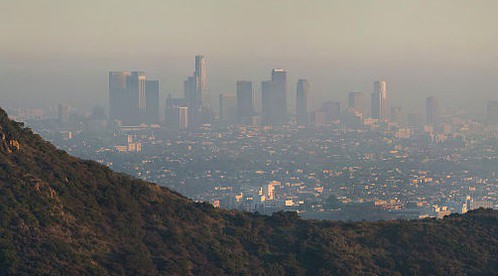
Editorial: Making Outdoor Time Safer in Summer: Bringing Cutting-Edge Tech to Ground-Level Ozone
News
06th Jul 2019
The July 4th holiday weekend is peak time for families to be outside — grilling, watching fireworks and enjoy the summer. But the heat and sunshine work together to brew something dangerous in our air: toxic, ground-level ozone.
Unlike the ozone layer in the upper atmosphere that protects us from the sun’s harmful UV rays, ground-level ozone forms when heat and sunlight cause volatile organic compounds (VOCs) and nitrogen oxides react. These chemicals are in our atmosphere because of car exhaust, factory emissions, and even to some extent plant respiration. Ozone is an extremely reactive compound that, when inhaled, damages cells in the respiratory system, and can aggravate asthma, chronic lung disease, and a host of other respiratory illnesses.
At my company to detect chemicals in the environment, we believe that fast and accurate sensing technologies are the key to finding and fixing the sources of pollution. When people on the ground know where high concentrations of ozone come from, we can take steps to fix the problem and protect our community
A growing ozone crisis

Some groups estimate that ground-level ozone will cause $580 billion in increased health costs and 2 million premature deaths annually. Ozone hurts plants too, and one estimate puts to reduction in soy-bean harvest at $35 billion per year by 2030.
The key to solving this crisis to to identify and eliminate the sources of the chemicals that react to cause ozone. Major sources of VOCs in the atmosphere are cars and gasoline-burning engines. Among these VOCs is benzene, a known carcinogen that my team and I have become intimately familiar with in monitoring air quality conditions across the country. The sources of benzene are diverse. As byproduct of incomplete combustion, benzene is emitted by forest fires, ineffective catalytic converters on cars, and cigarette smoking, among other sources, and is a component in gasoline.
Major reductions in ozone have come with tighter pollution and vehicle emission controls, but progress has slowed in recent years. Although federal law has limited benzene concentrations in gasoline since 2011, gas stations and leaking energy plants can still emit high levels of the chemical, as my team and I saw firsthand last year.
The more we understand the sources of pollution, the better we can be at fixing them.
That is part of why environmental authorities recommend waiting until after dark to pump gasoline in the summer. By limiting the leaking of benzene and other chemicals from gas nozzles, it limits the formation of ground-level ozone.
Closing in on solutions
So what else can we do to address this challenge?
The more we understand the sources of pollution, the better we can be at fixing them. If communities know where pollution is coming from, they can decide how much we want to spend on reducing pollution and how much they want to spend on health care costs.
Pollution is an issue that often looks like many of the problems we encounter in society: a few “bad actors” often account for a huge fraction of the cost. This is true for cars and large-scale polluters. But because we have traditionally lacked the tools to perform granular measurement on the ground, we haven’t been able to target the small set of worst-case polluters.
This is where technologies like our AROMA instrument come into play. We are now able to quickly survey large areas with extraordinary sensitivity to identify and quantify sources of pollution. Because different chemicals have different reactivity, it is critical to characterize exactly which chemicals are being released by any polluter. Tools like AROMA that provide immediate, multi-chemical analysis are giving us, for the first time, the ability to quickly and definitively identify where pollution is coming from so that we can better protect people.
